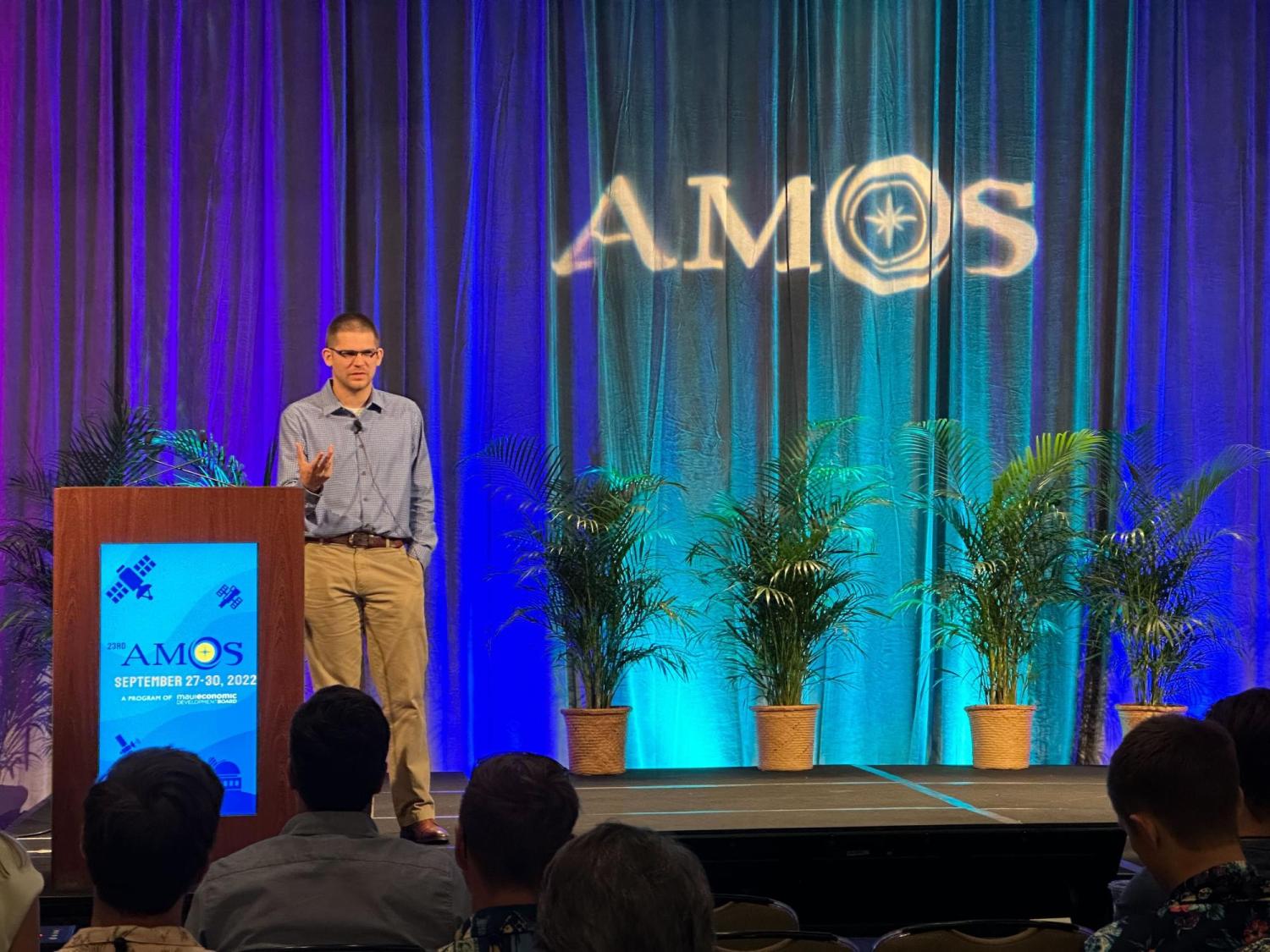Conor Benson Wins Best Session Presentation at AMOS

Simulation and Analysis of Event Camera Data for Non-Resolved Objects
Non-Resolved Object Characterization
Photon counters and exposure-based cameras cannot simultaneously provide exquisite temporal and spatial resolution in one sensor. Event (i.e. neuromorphic) cameras provide both and promise to advance studies of high-speed temporal and spatial intensity variations. Potential space domain awareness (SDA) applications include streak-based orbit determination and high frequency light curve analysis. No dynamic event camera simulations for non-resolved objects have been conducted. In this work, we develop an event camera model for this purpose. Referencing the event camera literature, we approximate the event pixel dynamics as a first order differential equation driven by logarithmic photon flux. The photon arrivals are modeled as a stochastic Poisson process. Considering static point sources with constant and time-varying mean brightness as well as moving sources, we use this model to explore event data dependencies on various target and sensor parameters. These parameters include the target’s mean brightness, on-sky motion rate, the brightness amplitude and frequency as well as the event threshold and event circuit parameters. For the time-varying brightness case, we also study how frequency estimate signal-to-noise depends on these parameters. We then validate simulation results against real event data of non-resolved space objects, showing clear consistencies. The observed sensitivity to target parameters demonstrates the great potential of event cameras for high spatio-temporal resolution astrometry and photometry. Finally, we conduct frequency analysis on the real data.

